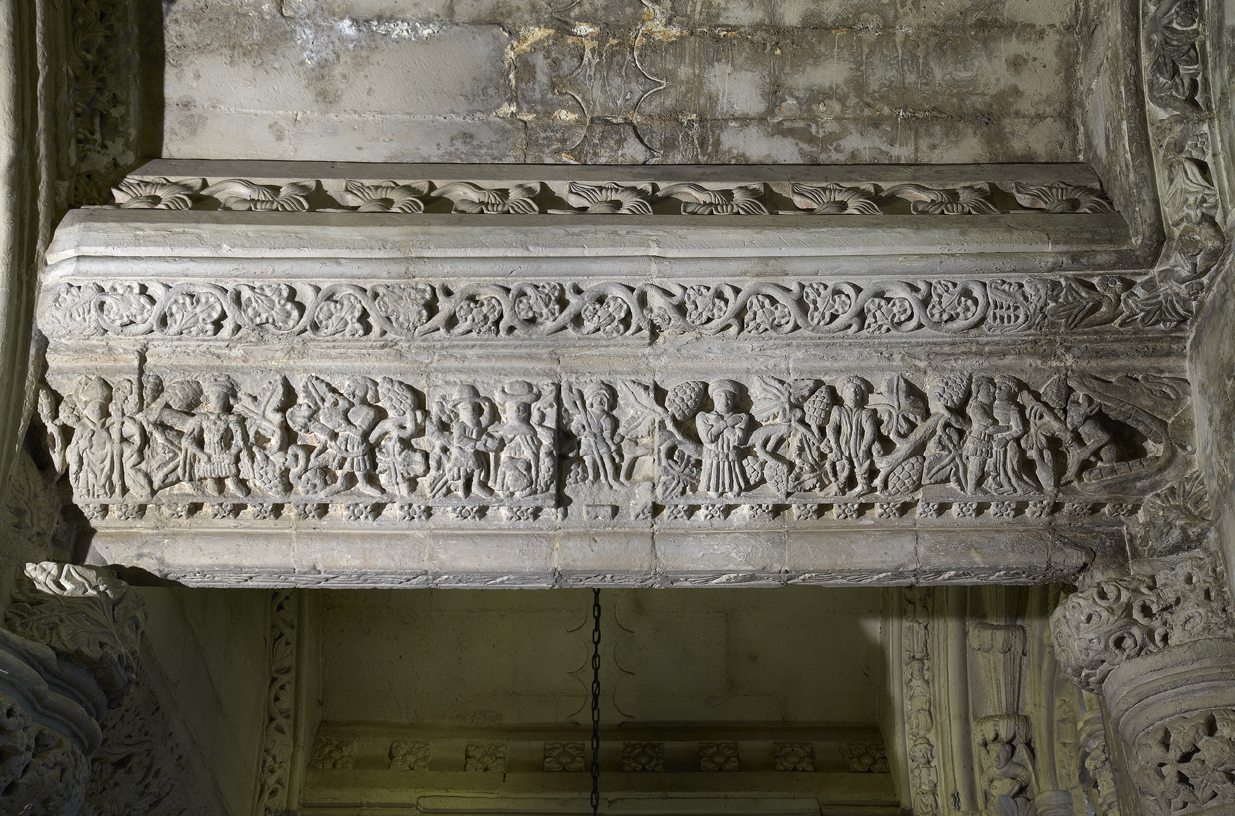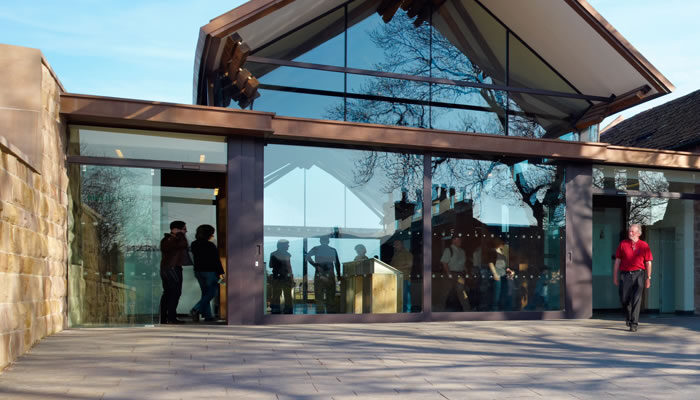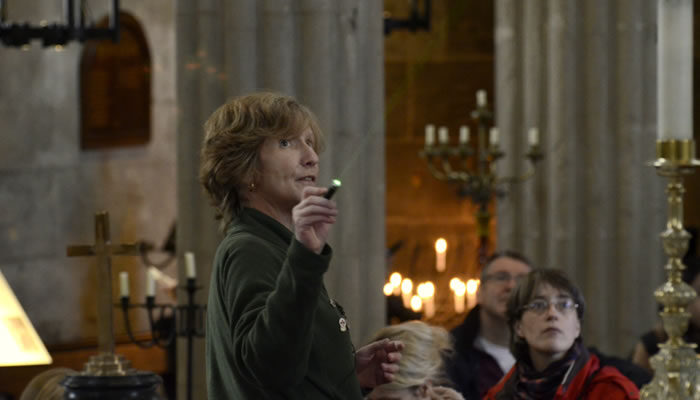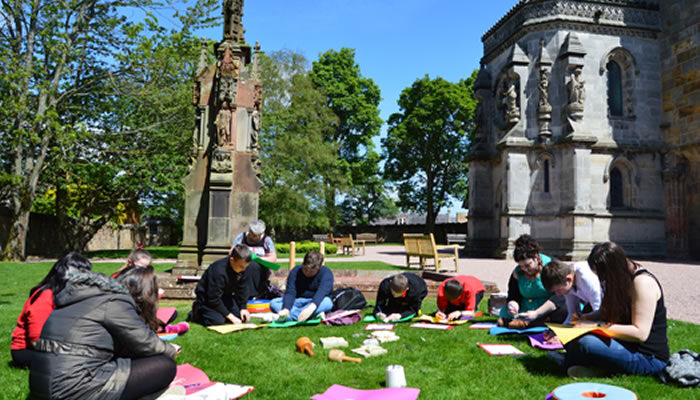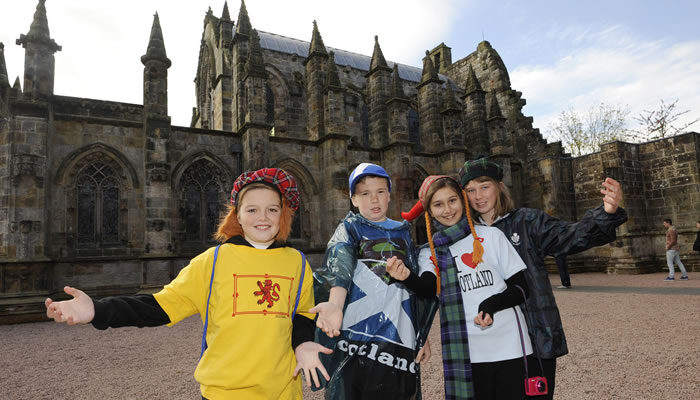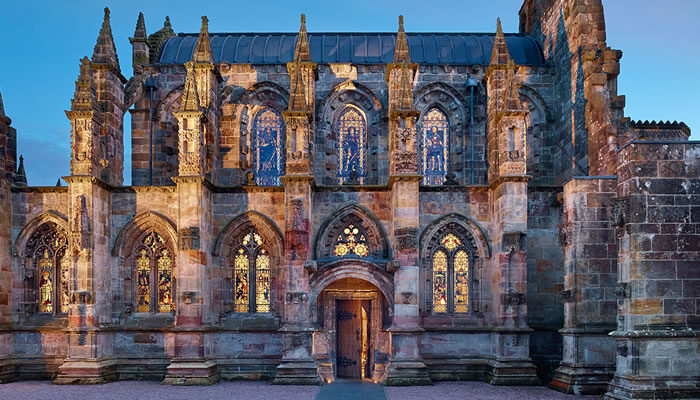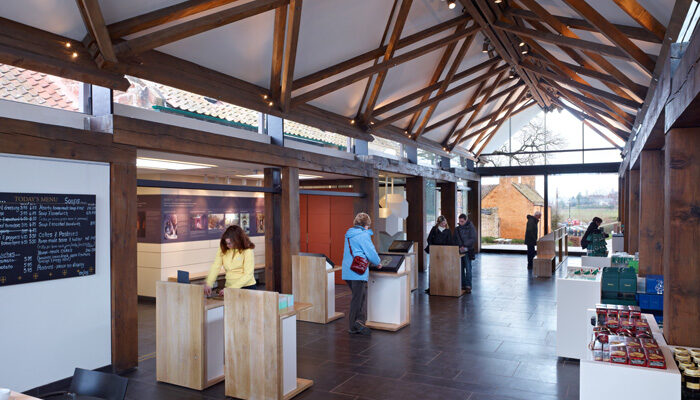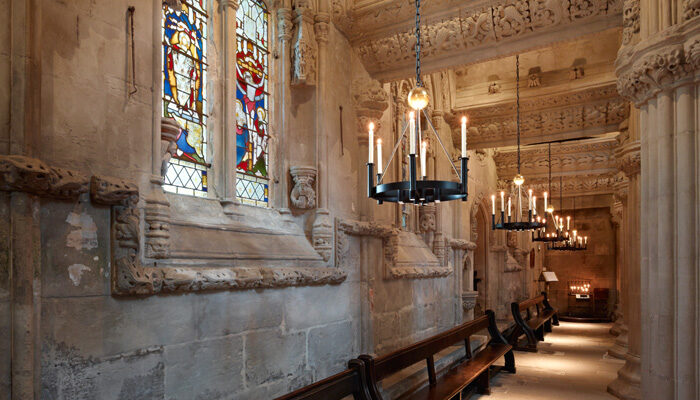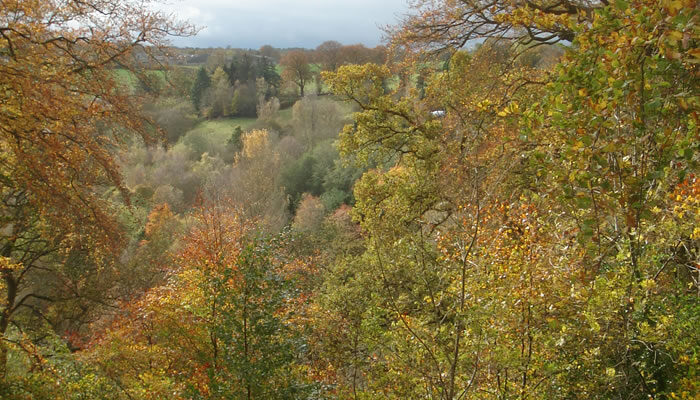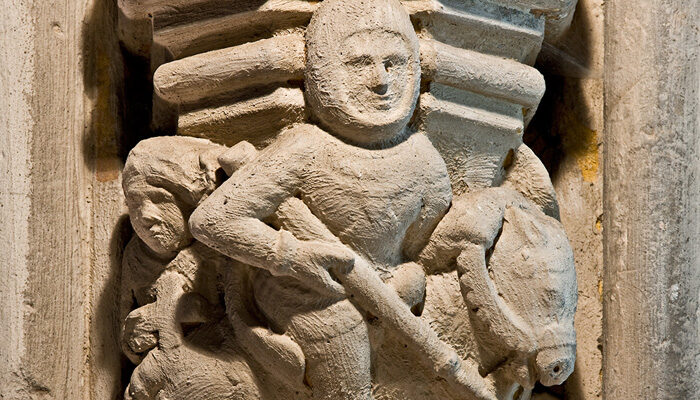
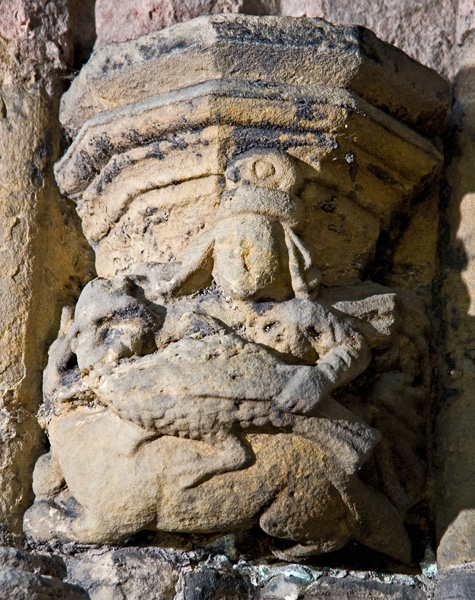
Farmers wife rescuing a goose from the jaws of a fox
A typical rural scene
This carving appears on the outside wall of the Chapel, near the entrance door. It tells us of the farming community which was based around Rosslyn in the fifiteenth century.
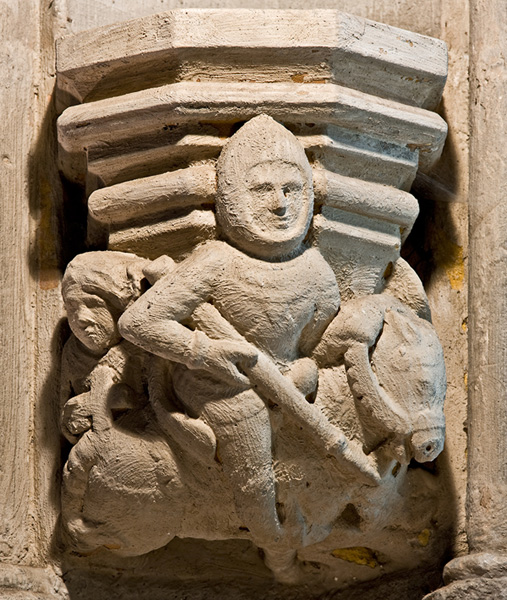
Knight on horseback
A possible representation of William 'the Seemly' St Clair, the first of the St Clairs to settle in Scotland
William is said to have brought a portion of the True Cross or 'Holy Rood' to Scotland. An alternative theory is that the figure holding a cross behind the knight may represent Queen Margaret whom William escorted from Hungary to marry Malcolm Canmore, King of Scotland, in 1070.
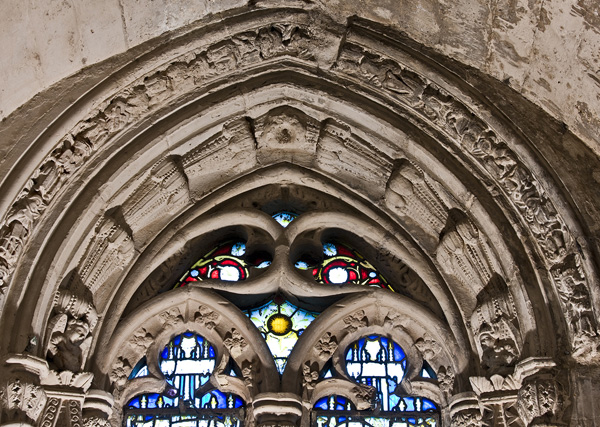
Maize
Surrounding a window are carvings of maize or Indian Corn
The presence of this plant carving in the Chapel raises many questions: not only is it an exotic plant but it originates from North America, a country traditionally thought to have been discovered by Columbus in 1492, almost 50 years after Rosslyn Chapel was built.
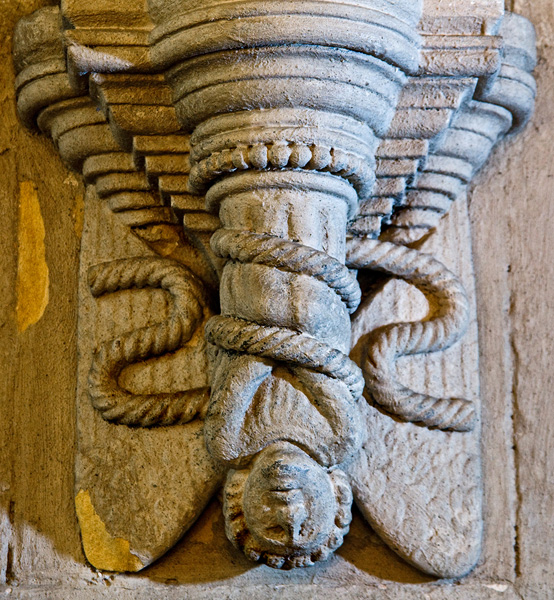
Lucifer
One of the many Masonic carvings in the Chapel
Hanging upside down and bound with rope, this is the fallen angel Lucifer. It is one of the depictions of angels in unusual positions in the Chapel which are significant in the rites of Freemasonry.
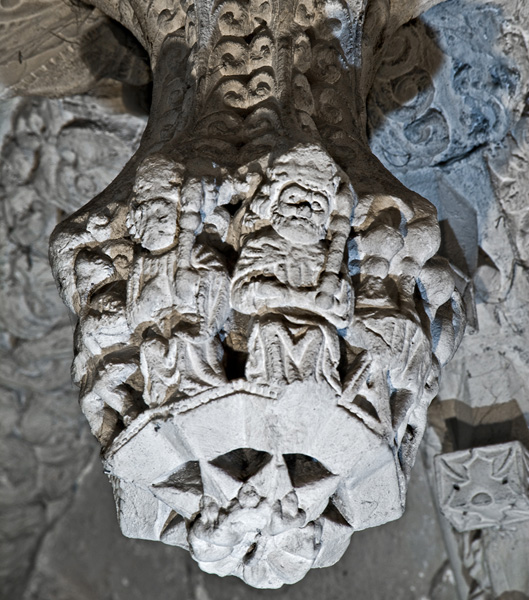
The Star of Bethlehem and the Nativity
Representation of the birth of Christ
This hanging boss encompasses the eight-pointed Star of Bethlehem carved with figures of the nativity. Clockwise around its sides are the Virgin and child; the manger; the three wise men; and three shepherds.
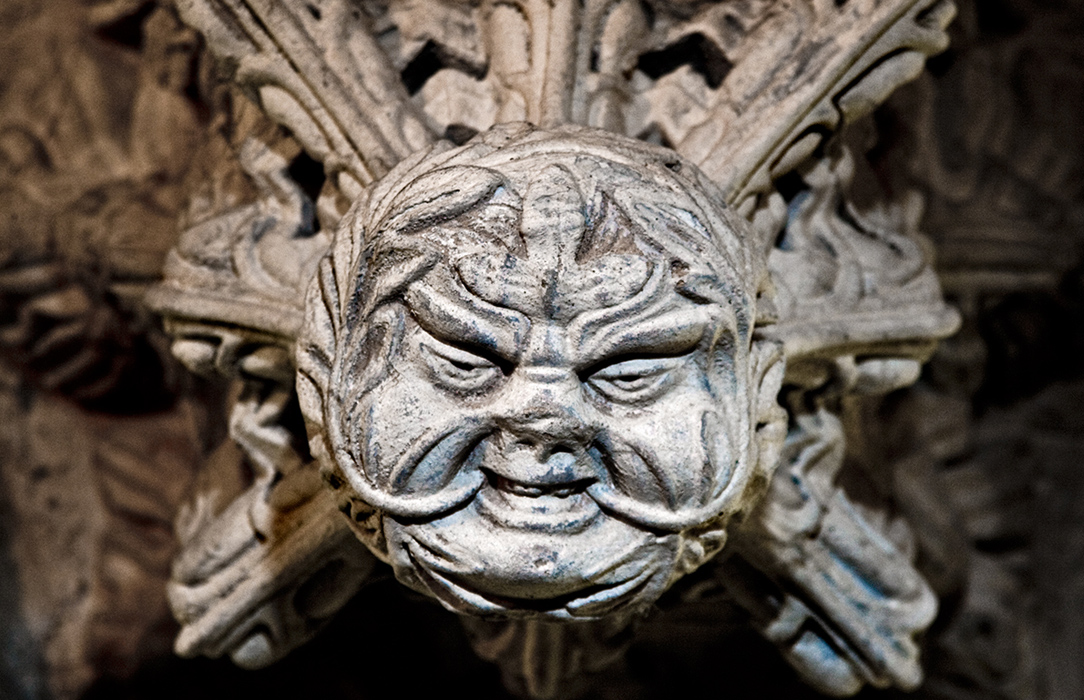
Green man
One of the best examples of over 100 'Green Man' carvings in the Chapel
Rosslyn is renowned for its many carvings of the Green Man, historically a pagan figure. The vines sprouting from his mouth represent nature's growth and fertility, illustrating the unity between humankind and nature.
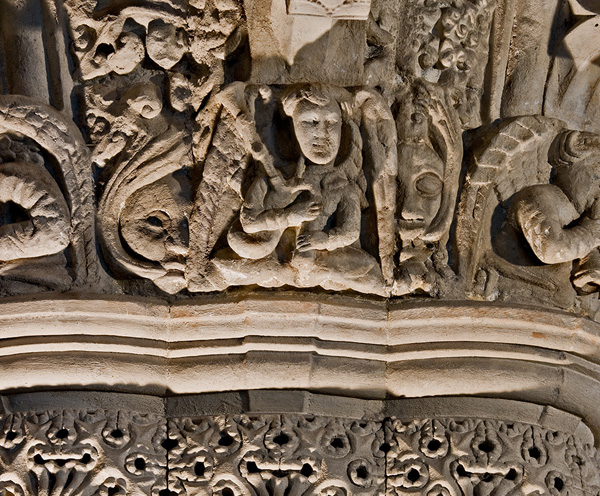
Angel playing the bagpipes
One of the many carvings of angels playing musical instruments
The carved angels in the Lady Chapel are celebrating Christ's birth with music. Bagpipes first appeared in Scotland from the mid-1400s and this is thought to be one of the earliest depictions of the instrument.
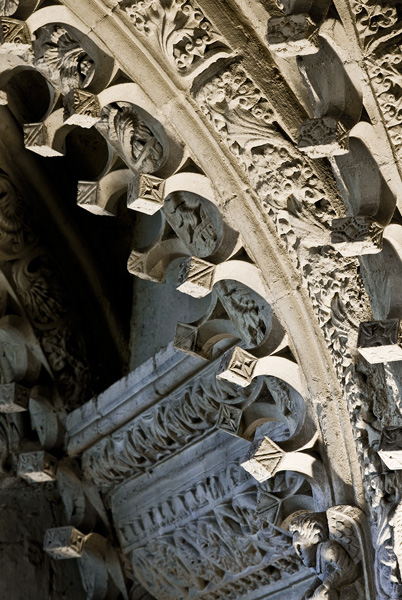
Musical cubes
Carved cubes that protrude from the arches of the Lady Chapel
Each one of these cubes is unique, carved with individual symbols made up of lines and dots. Various theories suggest that these may represent keys to a secret code or be musical notes. The Rosslyn Motet has recently been composed as one 'solution' to the code.
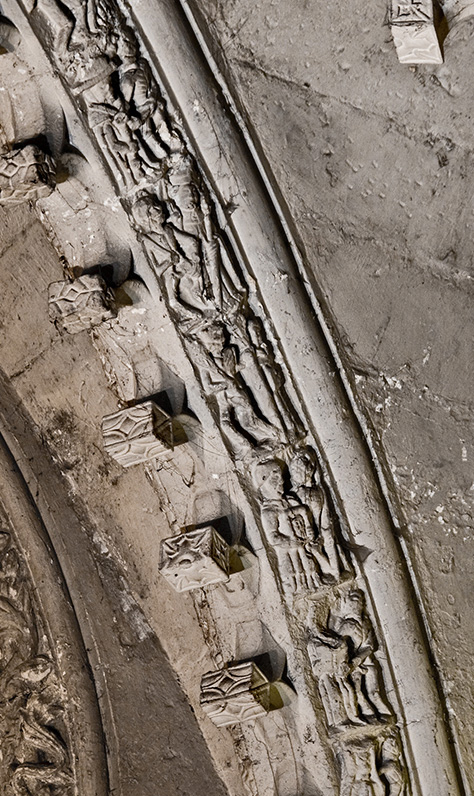
The Dance of Death
A string of figures caught in the 'Dance of Death'
Characters from all walks of life are each accompanied by a skeleton, Death. The dance springs from the skeletons pushing and pulling the reluctant people off to meet their fate and symbolises death's inevitable triumph over life.
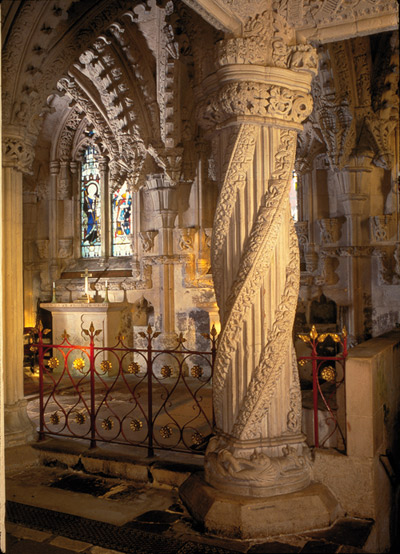
Apprentice Pillar
The most elaborately decorated pillar in the Chapel
This pillar contains one of the most famous and fascinating riddles of the building. An apprentice mason is said to have carved the pillar, inspired by a dream, in his master's absence. On seeing the magnificent achievement on his return, the master mason flew into a jealous rage and struck the apprentice, killing him outright.
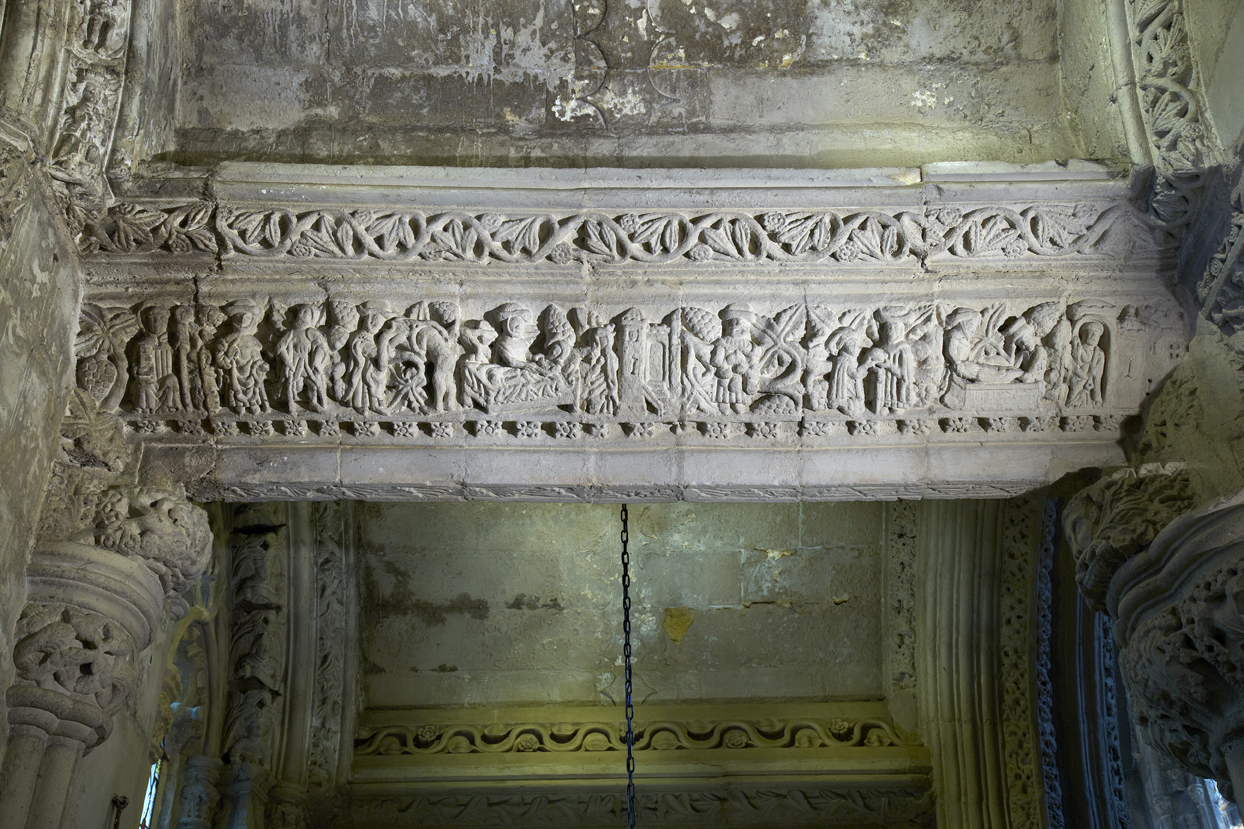
Seven Virtues
On the south aisle, you will see the seven virtues. Starting from the left, there is a bishop then, left to right, helping the needy; clothing the naked; looking after the sick; visiting those in prison; avarice (misplaced from the seven deadly sins, see below); feeding the hungry; burying the dead, then the reward for virtue, St Peter waiting at the gates of heaven with a key in his hand.
